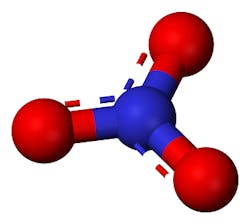GLASGOW, Scotland - A type of bacteria accidentally discovered could fundamentally re-shape efforts to cut the huge amount of electricity consumed during wastewater clean-up, according to researchers.
The microorganism – ‘comammox’ (complete ammonia oxidising) bacteria - was found in a drinking water system in the US and is said to be able to completely turn ammonia into nitrates.
Other research groups have also detected it in wastewater treatment plants, in groundwater and even in aquaculture systems.
The discovery was made by scientists working on the Engineering and Physical Sciences Research Council (EPSRC) funded Healthy Drinking Water project, which is being led by the University of Glasgow and is due to publish its core findings later this year.
Traditionally, removing nitrogen from wastewater has involved using two different microorganisms in a two-step approach: ammonia is oxidised into nitrites that are then oxidised into nitrates, which are turned into nitrogen gas and flared off harmlessly.
According to the EPSRC, this discovery could lead to a big rethink regarding the energy-saving innovations developed over the last two to three decades in the field of nitrogen removal.
Wastewater treatment is a huge consumer of electricity, accounting for 2-3 percent of all power usage in western countries, and no less than 30 percent of its energy bill results from the need to remove nitrogen.
Most of the sector’s efforts to reduce its energy use have focused on the two-microorganism approach.
Dr Ameet Pinto has led the team and said the discovery “took us completely by surprise”.
He said: “The discovery of a single microorganism capable of full nitrification will have a significant impact on our understanding of the nitrogen cycle and on efforts to manage nitrogen pollution. The potential is there for the wastewater treatment sector to exploit this breakthrough, which other teams in Europe have made in parallel with us.”
###
Read more
New nitrification technology helps WWTP reduce energy, sludge requirements
Company evaluates ammonia buoys for nitrification control



